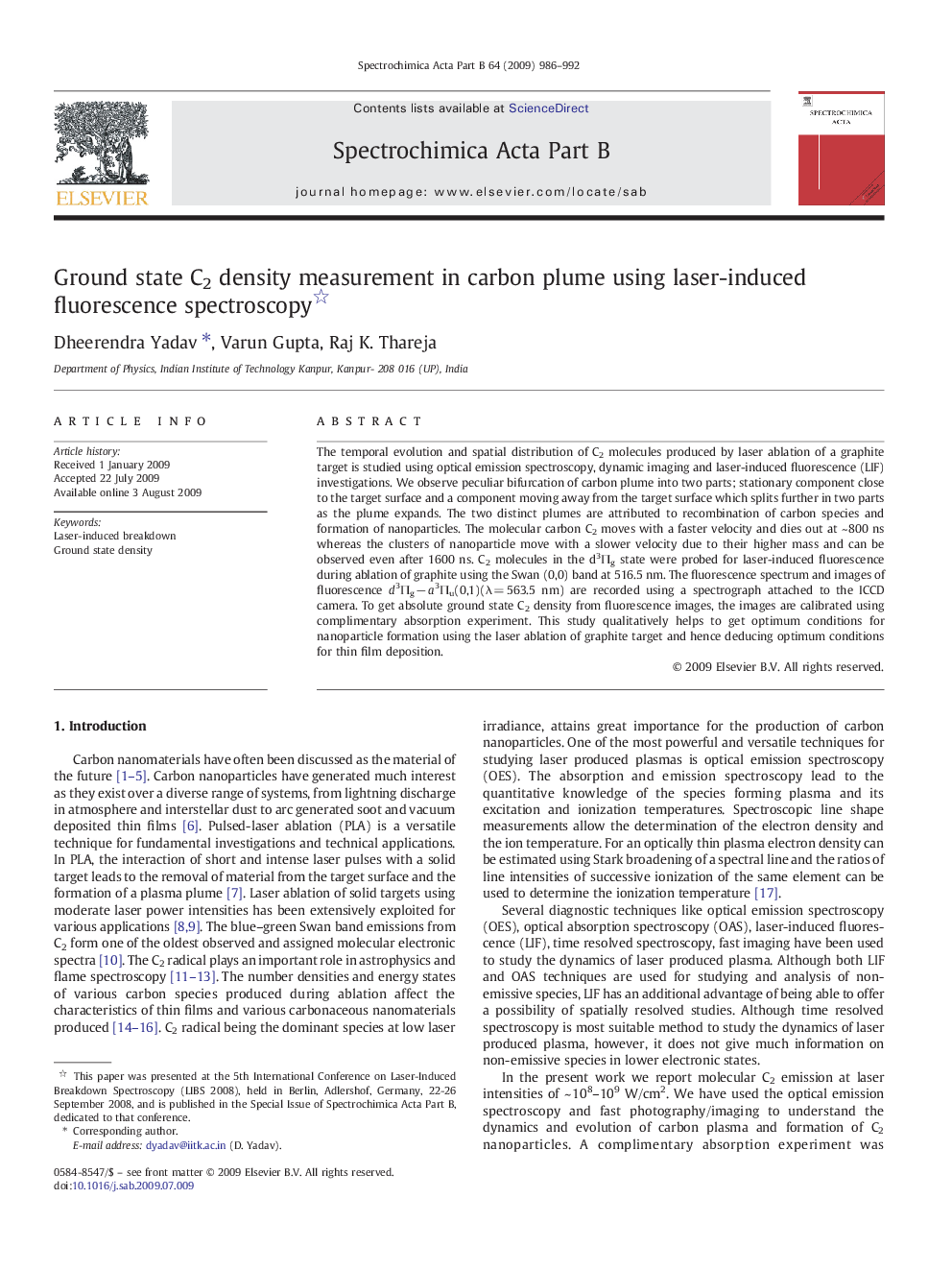| Article ID | Journal | Published Year | Pages | File Type |
|---|---|---|---|---|
| 1240793 | Spectrochimica Acta Part B: Atomic Spectroscopy | 2009 | 7 Pages |
Abstract
The temporal evolution and spatial distribution of C2 molecules produced by laser ablation of a graphite target is studied using optical emission spectroscopy, dynamic imaging and laser-induced fluorescence (LIF) investigations. We observe peculiar bifurcation of carbon plume into two parts; stationary component close to the target surface and a component moving away from the target surface which splits further in two parts as the plume expands. The two distinct plumes are attributed to recombination of carbon species and formation of nanoparticles. The molecular carbon C2 moves with a faster velocity and dies out at ~ 800 ns whereas the clusters of nanoparticle move with a slower velocity due to their higher mass and can be observed even after 1600 ns. C2 molecules in the d3Î g state were probed for laser-induced fluorescence during ablation of graphite using the Swan (0,0) band at 516.5 nm. The fluorescence spectrum and images of fluorescence d3Î g â a3Î u(0,1)(λ = 563.5 nm) are recorded using a spectrograph attached to the ICCD camera. To get absolute ground state C2 density from fluorescence images, the images are calibrated using complimentary absorption experiment. This study qualitatively helps to get optimum conditions for nanoparticle formation using the laser ablation of graphite target and hence deducing optimum conditions for thin film deposition.
Keywords
Related Topics
Physical Sciences and Engineering
Chemistry
Analytical Chemistry
Authors
Dheerendra Yadav, Varun Gupta, Raj K. Thareja,
